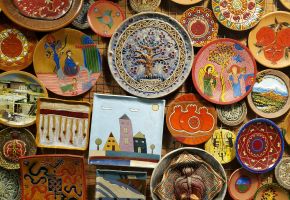April 24th marks Armenian Genocide Remembrance Day, a day that holds particular significance to the many thousands in the Armenian diaspora.
In a proclamation from the Office of California Governor Newsom:
“On April 24, 1915, the Ottoman Empire began its systematic genocide of Armenian people, a minority group that had long been treated as second-class citizens. The Armenian Genocide began with the forced deportation and murder of hundreds of Armenian intellectuals and community leaders and ended with the deaths of 1.5 million men, women and children. It was the first genocide of the 20th Century.
As we remember the victims and survivors of the Armenian Genocide, we also honor the strength and resilience of the Armenian people. Forced to build new lives in all corners of the globe, Armenians bravely forged ahead in the face of unimaginable tragedy. Thousands made their homes in California, and we are greater for their contributions.
Let us recommit ourselves to making certain that we never forget the Armenian Genocide, and that we always speak out against hatred and atrocities anywhere they occur.”
While today more Armenians live abroad then within Armenia, the diasporic populations hold Armenia and the Republic Artsakh firmly within them. This is especially true at CSU Northridge.
Data from the Armenian Studies Program (ASP) at CSUN shows that “Armenian CSUN students consistently number between 8 and 10 percent of the overall student body. It is estimated that the University graduates approximately 450 Armenian students annually. Additionally, CSUN has more than 100 Armenian faculty and staff, among them program directors, department chairs, and associate vice presidents.”
At the CSUN University Library, the Zaruhy “Sara” Chitjian Collection is preserved as testament to immigrant resilience, and “documents the Armenian genocide survival and immigrant experiences of Hampartzoum “Harry” and Ovsanna Piloyan Chitjian. The Chitjian Collection is an in-depth and intimate portrait of endurance, renewal, and legacy as told through a family archive created by their daughter, “Sara” Chitjian, and her passion as an educator and first generation Armenian American.”
The CSUN University Library is honored to serve and embrace it’s Armenian community, today and everyday.
With gratitude,
Brianna Sahagian-Limas



